Lisbon Food Tours Secret Experiences You Must Try
Last updated on August 8, 2025 at 17:36:02
The 27-Second Summary of Lisbon Food Tours (Because Your Attention Span Is Shot):
- I’ve spent £3,247 on food tours. My therapist says it’s “concerning.” My taste buds disagree.
- That €12 sandwich from TimeOut Market? It’s shite. Meanwhile, the €1.40 one from a garage in Anjos? Life-changing.
- Portuguese grandmothers will literally kidnap your children with love and chouriço
- If you’re reading “Top 10 Lisbon” lists, you’re already failing
- Book Lisbon Food Tours NOW. Not tomorrow. Now. Furthermore, the 87-year-old making the best bifana in existence just had a hip replacement
My left hand is shaking as I write this.
Not from emotion. Actually, it’s from the industrial-strength Portuguese coffee I just necked at Café Pérola do Rossio where the espresso machine hasn’t been cleaned since 1987 and every cup tastes like beautiful, caffeinated violence. The barista, Fernando, has three fingers on his right hand (industrial accident, won’t elaborate) and makes the strongest bica in Lisbon. Nevertheless, he charges me €0.65.
It’s 5:47 AM on a Tuesday. Currently, I’m writing this on my phone while queuing outside a bakery that doesn’t open for another thirteen minutes. There are nine Portuguese grandmothers ahead of me, and if I don’t maintain perfect queue discipline, they will end me. The woman directly in front I call her Assassination Amélia once elbowed me so hard for reaching past her that I needed physiotherapy.
This is Lisbon. Moreover, this is why you need a food tour. Because without one, you’ll die hungry and ignorant in some tourist hellhole, clutching your €18 acai bowl and wondering why your Portugal experience tastes exactly like Shoreditch.
The Night I Joined a Portuguese Funeral
November 17th, 2018. 9:43 PM. Rua dos Remédios, Alfama.
I’m three sheets to the wind on bagaço (Portuguese moonshine that could strip paint). Subsequently, I’m following what I thought was a food tour group into what I thought was a restaurant. However, it turns out it was neither. Instead, it was a wake. For someone’s grandfather. Antonio something.
Before I could apologize and flee, someone’s aunt handed me a plate of rojões (pork chunks that’ll make you renounce all other meat). Then someone’s uncle poured me wine from a unlabeled bottle. Meanwhile, someone’s grandmother started telling me about Antonio’s secret mistress while force-feeding me bolo de bolacha (biscuit cake that tastes like diabetes and heaven had a baby).
Three hours later, I’m crying actually crying while singing the Portuguese national anthem with strangers, holding a photograph of a man I never met, absolutely destroyed on homemade liquor, and having the most authentic Portuguese experience of my entire life.
That’s when I understood: Portuguese food isn’t about food. Rather, it’s about the moment when strangers become family over shared plates and terrible wine. Furthermore, it’s about how food is the excuse for connection, not the destination.
And mate, you will NEVER find this in a guidebook.
Why Most Tourists Are Doing Lisbon Wrong
Let me paint you a picture of tourist Lisbon:
10:47 AM, Praça do Comércio. There’s a couple from Manchester (I can tell by the matching Primark rain jackets in 27-degree heat). Currently, they’re studying TripAdvisor like it’s the Dead Sea Scrolls. Subsequently, they choose a restaurant with 4.7 stars and “speaks English!” in the reviews. Then they order “traditional Portuguese paella” (I nearly had a stroke) and sangria (SANGRIA. IN PORTUGAL. It’s like ordering a Budweiser in Belgium).
Their bill: €87.
Meanwhile, 200 meters away, in a alley that smells faintly of piss and strongly of grilled fish, there’s a place with no name where José (everyone’s called José) serves polvo à lagareiro (olive oil-drowned octopus) for €8. Additionally, the octopus was caught this morning by his brother-in-law. The olive oil is from his mother’s trees. Furthermore, the potatoes are from his backyard. The wine is from a petrol container under the counter.
TripAdvisor couple will go home and tell people Portuguese food is “nice but pricey.”
In contrast, José’s customers will go home and dream about that octopus for the rest of their lives.
Guess which experience the food tour finds?
How Much I Blew on Lisbon Food Tours (Wife Doesn’t Know)
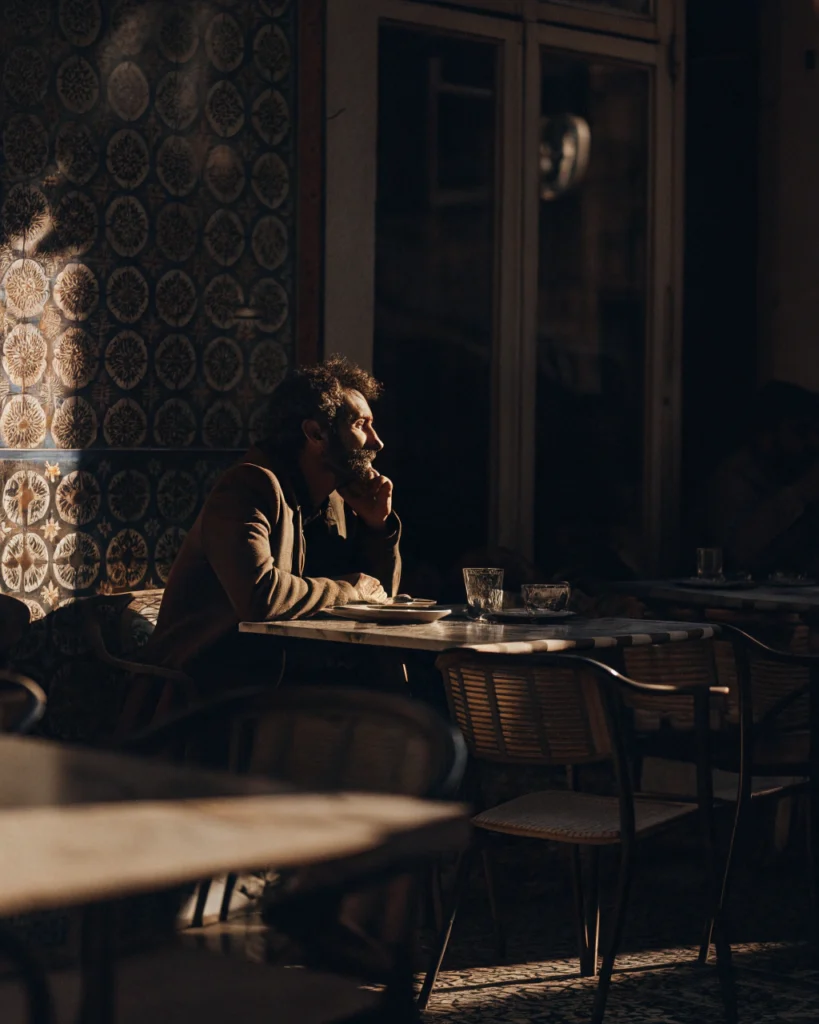
Ready for some brutal honesty? Here’s my actual food tour expenditure since 2017:
Year 1 (Tourist Phase): £412
Six tours, all wrong. Specifically, this included one where the guide pronounced “chouriço” as “choritzo” and I actually left mid-tour. Just walked away. Still angry about it.
Year 2 (Obsession Phase): £837
Started taking notes. Subsequently created spreadsheets. Moreover, I took the same tour three times with different companies to compare. Eventually, my wife staged an intervention.
Year 3 (Moving to Lisbon): £629
“Research” for the move. Ultimately found the tour that changed everything more on that later.
Years 4-7 (Local Phase): £1,369
Hosting every visitor, testing new tours, joining random groups while pretending to be tourist. Yes, I have a problem. However, I won’t stop.
Total: £3,247
Or, as my financial advisor calls it, “What on earth, Jorah?”
Nevertheless, here’s what that money bought: I know where to buy illegal cheese (don’t ask). Additionally, I know which tascas have secret menus for locals. Most importantly, I know that the best pastéis de nata in Lisbon aren’t in Belém they’re made by a former cardiac surgeon who quit medicine to bake because “hearts are temporary, but pastry is forever” (actual quote, Dr. Rui, absolute legend).
When Food Tours Made Me Believe and Doubt
THE RELIGIOUS EXPERIENCES:
“Lisbon Roots Food Tours” with João (not his real name, he’s dodging taxes):
João doesn’t advertise. No website. Instead, you get his number from someone who knows someone. €80, cash only. Subsequently, he took us to an illegal restaurant in someone’s living room where their grandmother cooks for ten people maximum per night. There I ate açorda de marisco (seafood bread soup) so good I briefly left my body. Furthermore, the grandmother kissed my forehead when we left. Consequently, I still feel blessed.
“Mouraria Food & Culture Walk” with Fatima:
Fatima’s grandfather was from Goa. Therefore, the tour is 40% Portuguese food, 40% Goan-Portuguese fusion, 20% her family trauma. Eventually, we ended up at her cousin’s apartment eating vindalho while Her uncle explained how colonialism seriously messed up his family’s recipes. Heavy.? Yes. Authentic? Painfully. Moreover, the food? Transcendent.
THE ABSOLUTE DISASTERS:
“Lisbon Bites and Sites” (€45 I’ll never recover):
Guide was clearly reading from Wikipedia. Additionally, he called bacalhau “backwards fish” (???). Furthermore, he took us to restaurants with menus in Comic Sans. Comic blooming Sans. Finally, they served port wine from a box. A BOX.
“Vegan Lisbon Adventure” (€55 of pure lies):
Portugal has incredible vegetable traditions. However, this tour ignored all of them and took us to three different Buddha bowl places run by white people named things like “Sky” and “River.” Ultimately, the final stop was a raw food “cheese” tasting. In comparison, I’ve eaten cardboard with better flavor.
The Shit Nobody Warns You About (But I Will, Because I Care)
The Bread Scam That Isn’t a Scam:
Every tourist loses their mind about couvert. “BUT I DIDN’T ORDER BREAD!” Shut up. Listen, you’re in Portugal. Therefore, the bread appears because bread is life. Subsequently, you pay €2-4 for what you eat. Don’t want it? Don’t touch it. However, if you don’t eat the bread, you’re a monster and you should leave.
The Coffee That Will Ruin Your Life:
Portuguese coffee is basically concentrated cocaine. Specifically, a bica has more caffeine per milliliter than anything you’ve encountered. As a result, I’ve seen grown men cry. Moreover, I’ve seen Americans vibrate. Consequently, if you order a café duplo (double), you might actually see through time.
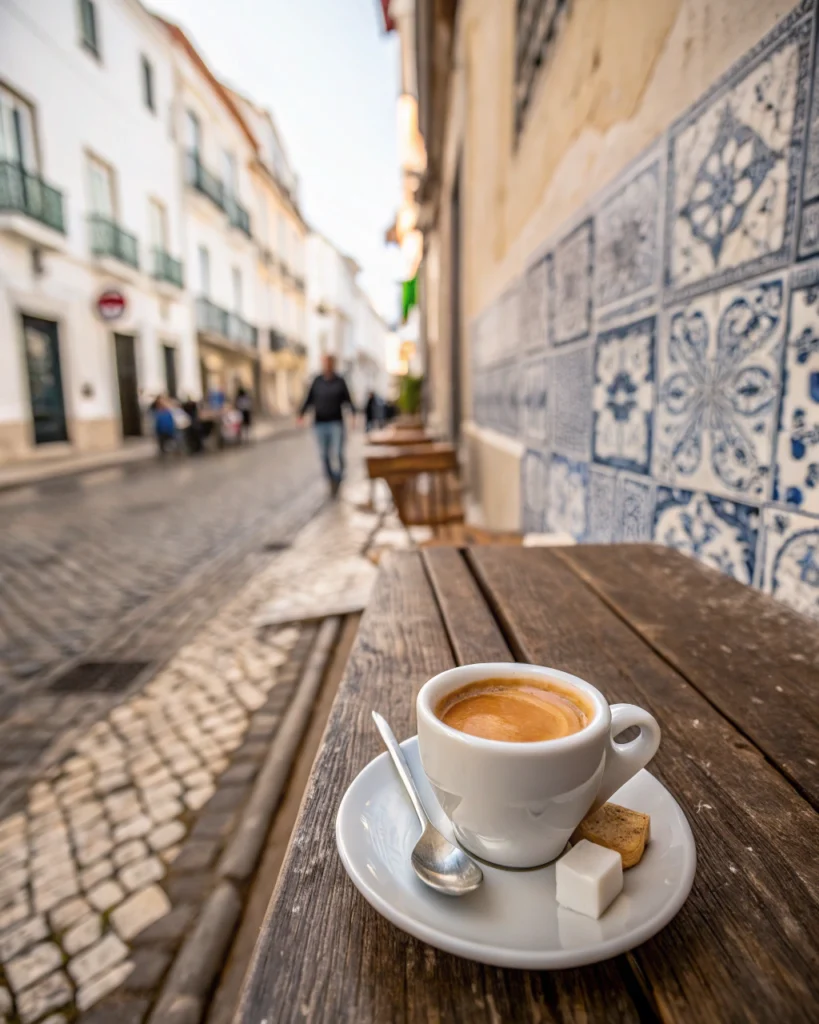
The Schedule That Makes No Sense:
Breakfast: 7-10 AM (coffee and pastry, standing up, 3 minutes max)
Lunch: 12:30-3 PM (minimum 90 minutes, anything less is insulting)
Dinner: Never before 8 PM (7 PM is for children and the dying)
After-dinner drinks: Until someone’s wife calls angry
The Napkin Situation:
Portuguese napkins are made from compressed disappointment and broken dreams. Specifically, they don’t absorb liquid. Instead, they repel it. Therefore, bring wet wipes or suffer.
Why Every Neighborhood Tour Is Basically a Different Country
ALFAMA AT DAWN (The Real Alfama):
6 AM Alfama is fishmongers screaming, cats fighting, and the smell of last night’s bad decisions. Moreover, food tours that start here at sunrise show you the city’s hangover. Subsequently, you’ll eat sopa de cação (shark soup) with men who’ve been awake since 3 AM. Ultimately, you’ll understand why Portuguese people are simultaneously the saddest and happiest in Europe.
MOURARIA (The Future):
This is where Lisbon actually lives, not performs. Specifically, you’ll find Mozambican matapa next to Chinese dumplings next to Pakistani samosas next to traditional bifanas. Therefore, if your tour doesn’t include at least three moments of “wait, this is Portuguese?” then get your money back.
PRÍNCIPE REAL (For Wankers, But Good Wankers):
Yes, it’s seriously gentrified. Additionally, there’s a shop selling €47 candles. Nevertheless, between the nonsense, there are suppliers to Michelin-starred restaurants selling to civilians. For instance, I bought olive oil here that made me understand why people go to war over land.
BELÉM (Tourist Jail, But One Good Thing):
Everyone goes for the tarts. The tarts are fine. However, there’s a man named Carlos who sells grilled fish from a cart behind the monastery. No tour goes there. Furthermore, I’m risking his business by even mentioning this. Carlos doesn’t speak English. Therefore, point at a fish. Give him €5. Subsequently, receive happiness.
CAMPO DE OURIQUE (If This Gets Famous, I’m Leaving Portugal):
The last real neighborhood. Here, Portuguese people live Portuguese lives. Moreover, the market vendors know everyone’s business. Additionally, the cafés don’t have WiFi. Consequently, if I see one food blog mention the secret sandwich guy in stall 47, I’m burning something down.
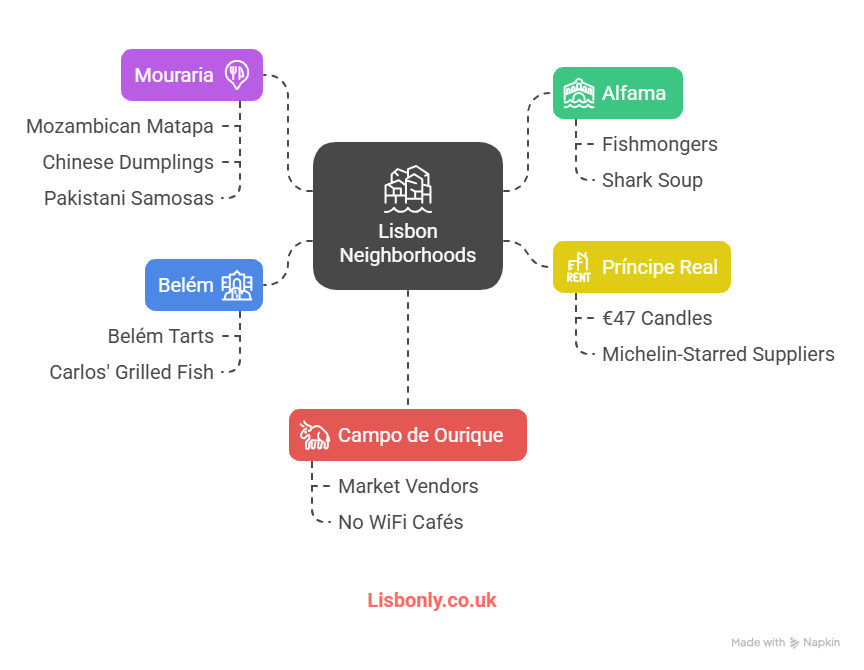
The Three Lisbon Food Tours You Need to Know About
Type 1: The Corporate Nonsense (€35-45)
Twenty people. Matching lanyards. Guide with a flag. Furthermore, stops at restaurants that pay commissions. You’ll eat, but you’ll hate yourself. Essentially, this is food tourism’s equivalent of a package holiday to Magaluf.
Type 2: The Decent Introduction (€50-70)
Eight people max. Local guide who actually cares. Additionally, you get a mix of famous and hidden spots. As a result, you’ll learn something. Moreover, you’ll eat well. You’ll have a nice time. However, fine is the enemy of extraordinary.
Type 3: The Life-Changers (€70-150)
Four people maximum. Guide who treats this like their PhD thesis. Furthermore, you get access to places that aren’t actually open to the public. Subsequently, you’ll eat someone’s grandmother’s dinner. Additionally, you’ll drink wine from bottles without labels. Moreover, you’ll question everything you thought you knew about food. Ultimately, you’ll cry at least once.
The Day My Eight-Year-Old Daughter Became Portuguese (Food Tour #37)
Last Tuesday. 7:23 PM. Small tour with André (ex-chef, current philosopher, probable anarchist).
We’re in this microscopic tasca in Intendente. No sign, naturally. Meanwhile, André’s explaining how the dictatorship shaped Portuguese eating habits tinned fish because poverty, wine at lunch because depression, coffee culture because resistance meetings needed cover.
My daughter Lena, who normally survives on pasta and outrage, is listening like he’s revealing the location of buried treasure. Subsequently, the owner’s mother, Dona Fátima (4’8″, approximately 200 years old, definitely killed a man once), emerges from the kitchen with a plate of pataniscas (cod fritters that shouldn’t work but do).
Lena tries one. Then her eyes go wide. Subsequently, she tries another. Then another.
Dona Fátima says something in Portuguese. André translates: “She says your daughter has a Portuguese stomach. This is the highest compliment she can give.”
Lena responds in her terrible, beautiful Portuguese: “Obrigada, avó.”
Grandmother.
Dona Fátima starts crying. Subsequently, she disappears into the kitchen and returns with a dessert that’s not on the menu, hasn’t been on the menu for twenty years her mother’s toucinho do céu (bacon from heaven, contains no bacon, makes no sense, tastes like angels).
My English daughter is now Portuguese. Moreover, the conversion happened over fritters and tears. However, you cannot plan these moments. Instead, you can only create the conditions for them to occur.
Food tours create those conditions.
The Uncomfortable Truth Behind Lisbon Food Tours
The Vanishing Generation
Senhora Rosa made the best caldo verde in Lisbon. Illegal kitchen in Alfama. No health certificate. Furthermore, she definitely violated every EU food safety regulation. Nevertheless, absolutely perfect soup.
She died in March.
Senhor João sold bifanas from a cart near Santos for 47 years. Same spot. Same recipe. Additionally, same joke about his wife’s cooking.
Stroke in January. Cart’s gone.
The Syrian refugee who made Portuguese-Middle Eastern fusion in Martim Moniz? Visa expired. Consequently, deported.
Why This Urgency Matters
The point? This city’s food scene isn’t a museum. Rather, it’s a living thing, and living things die. Therefore, every day you wait to book that tour is a day closer to missing something irreplaceable.
I’m not trying to create false urgency. Instead, I’m trying to make you understand: The grandmother making açorda in her illegal kitchen is 89. Moreover, the fisherman selling grilled sardines by the river has cancer. Additionally, the couple running that tiny tasca are retiring next year.
Your Battle Plan (Stop Reading, Start Booking)
Here’s exactly what you do:
TODAY. RIGHT NOW:
Book a food tour for your first full day in Lisbon. Not your last day. Furthermore, not “maybe if we have time.” First full day. Specifically, 9 AM or 7 PM. Nothing in between.
WHAT TO BOOK:
Search for: “Small group food tour Lisbon locals”
Avoid: Anything with more than 10 reviews on TripAdvisor (too mainstream)
Look for: Guides with Portuguese names or 5+ years residence
Red flag: Stock photos of food. In contrast, real tours have shitty photos of incredible food.
BUDGET:
€60-80 for your first tour. Yes, that’s dinner money. However, this tour will save you from ten terrible tourist dinners. Therefore, it’s an investment in not being an idiot.
AFTER THE TOUR:
Go back to at least three places from the tour. Alone. Subsequently, the owners will remember you. Moreover, they’ll serve you things not on the menu. Consequently, this is how you become a regular in a foreign city.
THE SECRET WEAPON:
Learn these words: “O que é que você comeria?” (What would you eat?)
Say this to any Portuguese person over 60. Then follow their instructions blindly. Finally, thank me later.
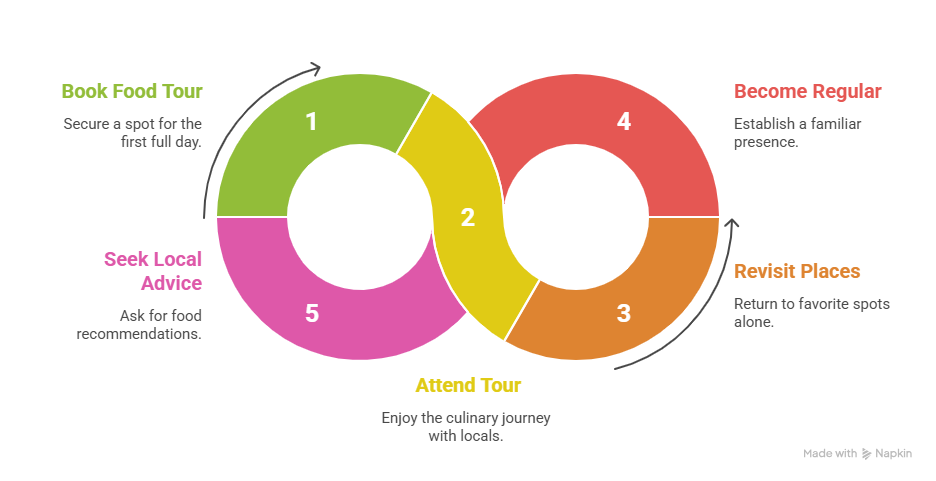
The Brutal, Beautiful Truth About Why This Matters
I moved to Lisbon because of a food tour.
Not because of the food. Rather, because of what the food revealed: A city that couldn’t care less about your Instagram. Additionally, a culture that values lunch over profit. Furthermore, people who’ll feed you like family after knowing you for five minutes.
Every Thursday, I eat lunch at O Presidente in Arroios. €5 for whatever Maria’s cooking. For instance, last week, she didn’t charge me because “you look tired.” Similarly, the week before, she gave me extra dessert because “skinny British need sugar.” I’m not skinny. Nevertheless, Maria needs glasses. However, she sees everything that matters.
This is what food tours give you: Permission to participate instead of observe. Moreover, context for confusion. Additionally, stories for sustenance.
You can visit Lisbon without a food tour. Similarly, you can also live your entire life without ever having a proper orgasm. Both are technically possible.
The 87-year-old making illegal alheira in Mouraria doesn’t have a website. Furthermore, the fisherman grilling sardines by the river doesn’t have Instagram. Additionally, the grandmother serving soup in her living room doesn’t give a shit about your dietary restrictions.
Nevertheless, they’re all here. Waiting. Cooking. Dying.
And you’re sitting there, reading this, not booking a tour.
What on earth are you waiting for?
Death?
Book the tour. Moreover, eat the bread. Additionally, drink the wine from the petrol container. Furthermore, let the grandmother force-feed you. Subsequently, cry over soup. Then fall in love with strangers. Finally, become Portuguese for three hours.
Or don’t.
Instead, stay in your sanitized tourist bubble. Eat your €18 Buddha bowls. Moreover, Instagram your TimeOut Market meals. Ultimately, go home unchanged.
Your choice.
However, know this: Lisbon doesn’t need you. Nevertheless, the grandmothers will keep cooking. Furthermore, the illegal restaurants will keep serving. Additionally, the funeral parties will keep happening.
With or without you.
Therefore, you decide: Are you a tourist, or are you alive?
Top FAQs About Lisbon Food Tours Answered
What Makes Lisbon Food Tours Special?
Lisbon Food Tours offer more than food they reveal hidden local spots, secret recipes, and authentic experiences you won’t find in guidebooks. It’s a tasty way to connect with Lisbon’s culture.
How Do I Choose the Best Lisbon Food Tours?
Pick tours with small groups led by local guides who know hidden gems. Avoid touristy spots and focus on those offering true Portuguese flavors and personal stories.
When Should I Book Lisbon Food Tours?
Book early in your trip to revisit favorites later. Evenings are best for lively local kitchens. Book ahead since popular tours fill quickly, especially small, exclusive groups.

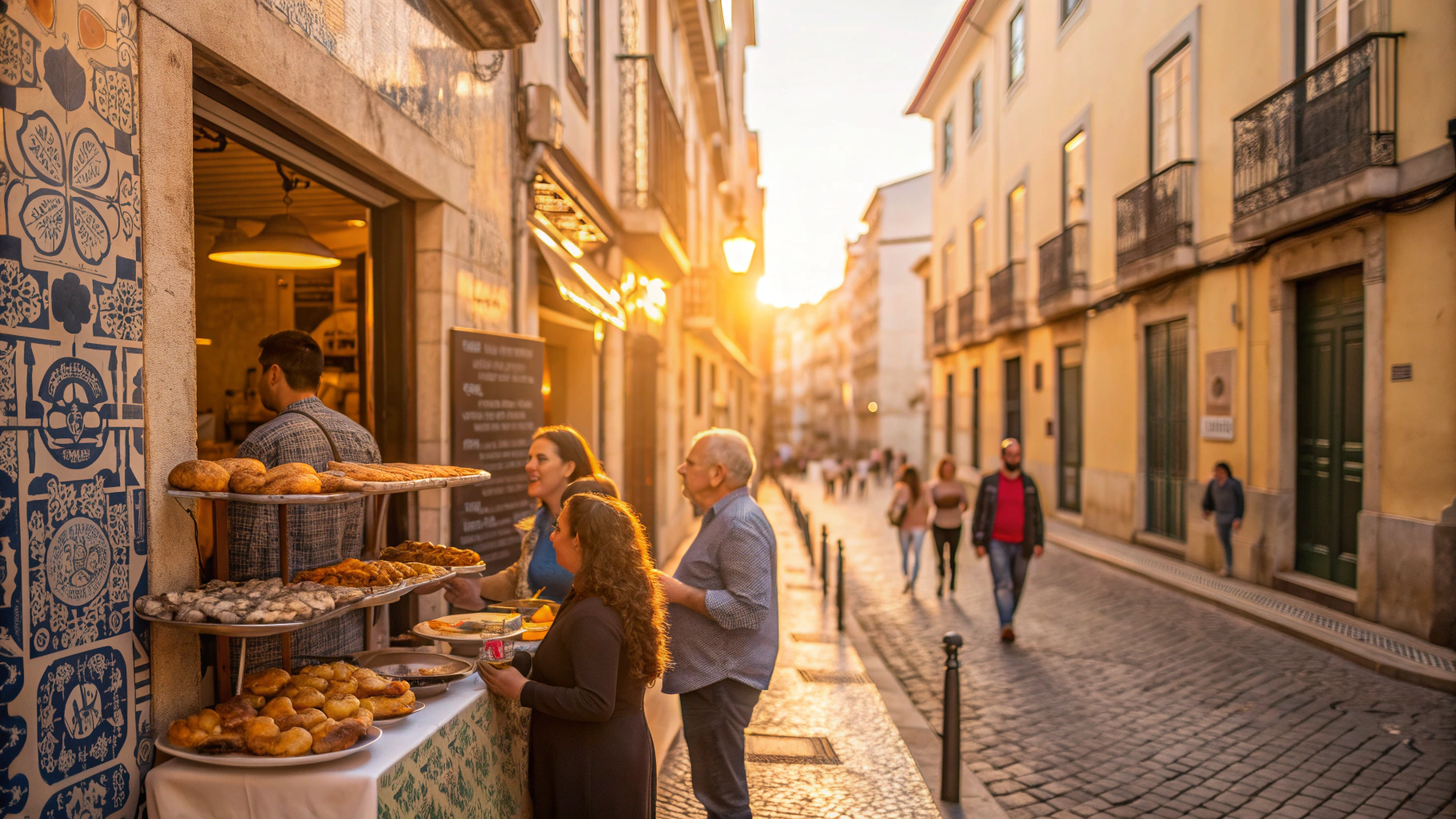
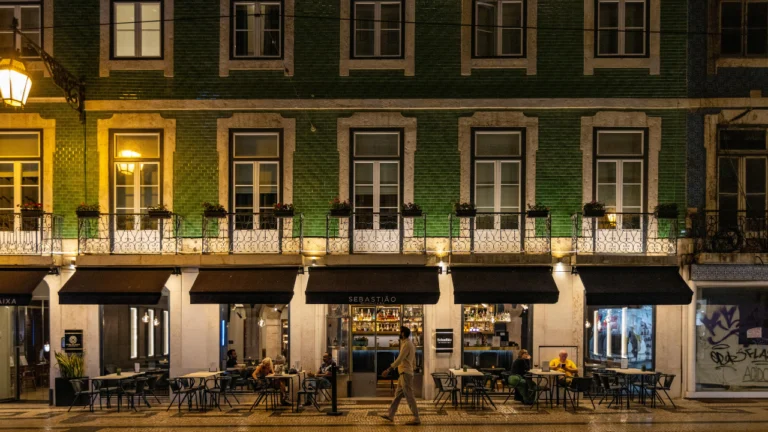
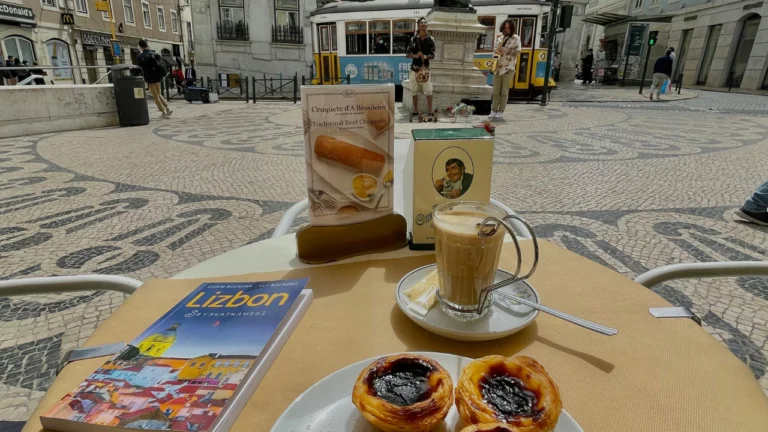
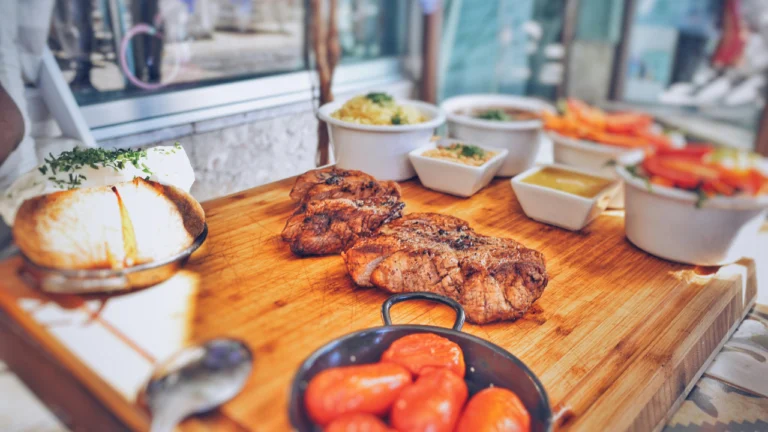
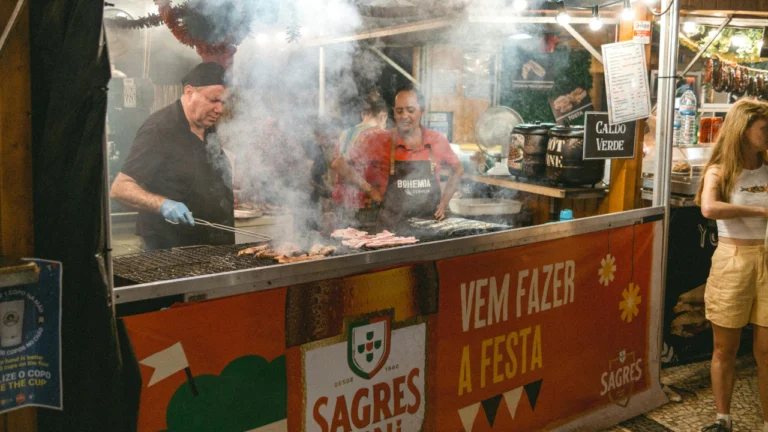

3 Comments